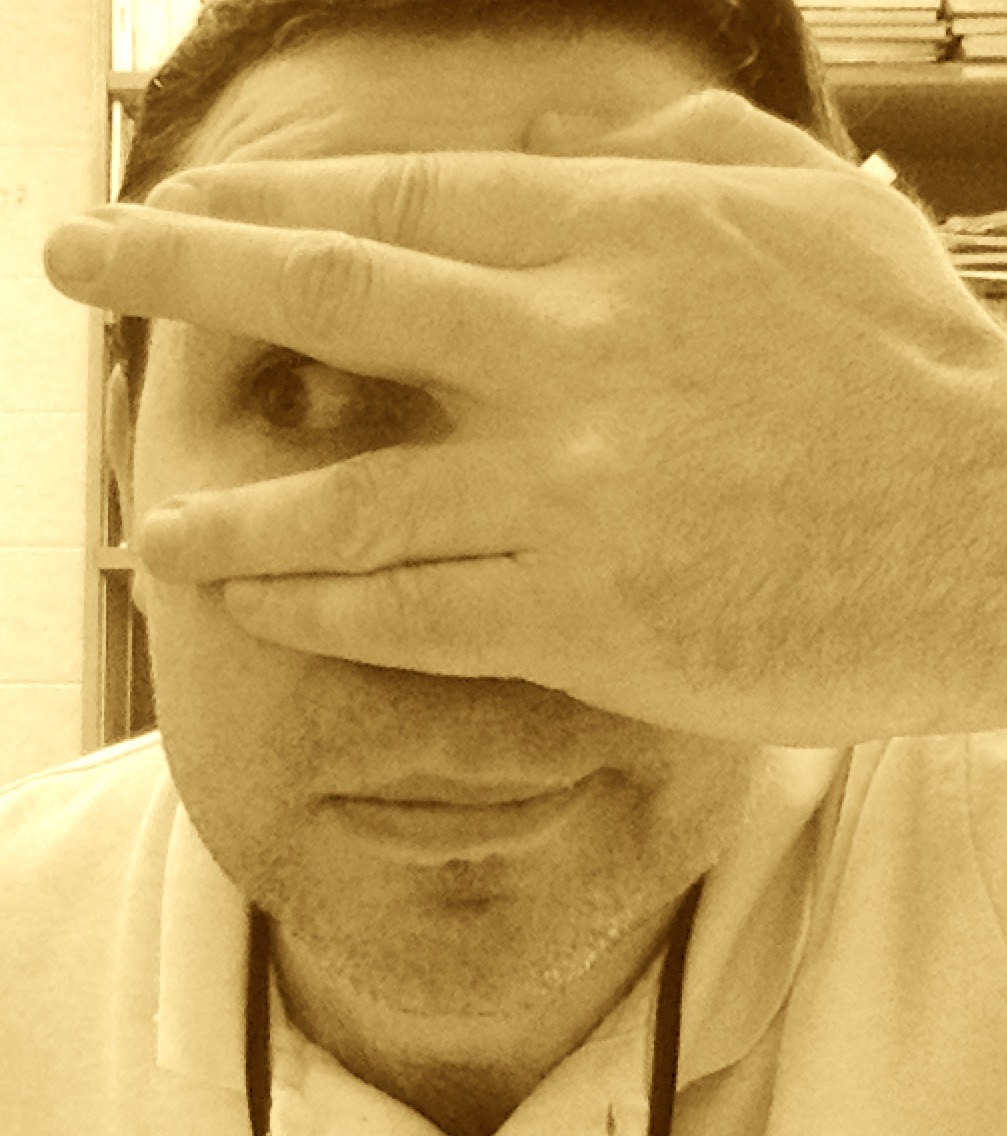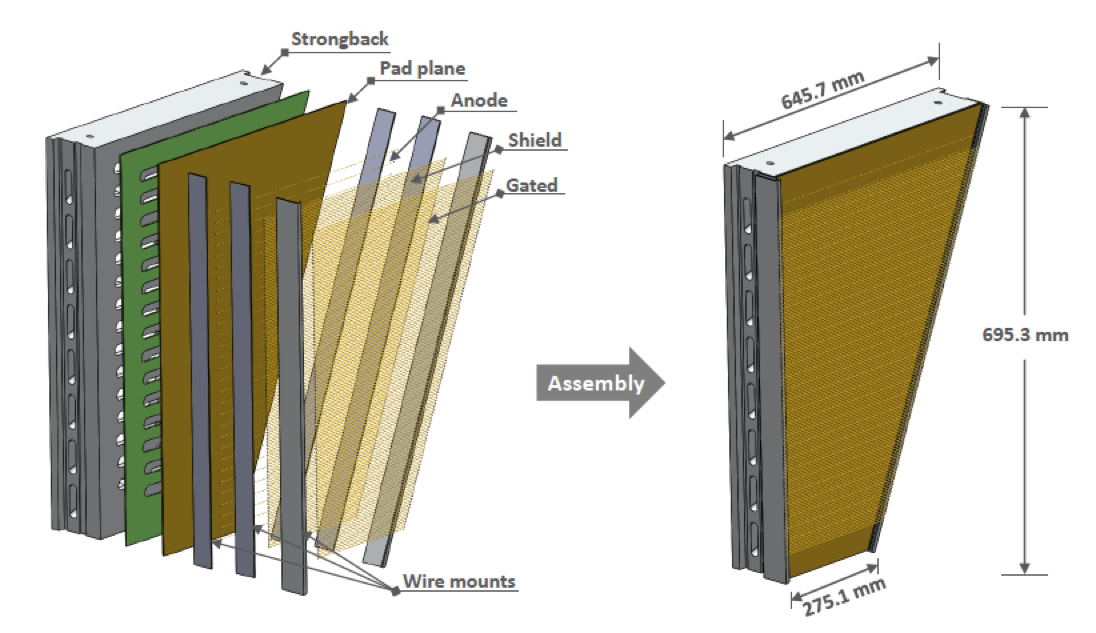February 2018
STAR Newsletter
February 2018 edition
Contents:
- Meet New Collaborators: Heidelberg
- From the Spokespersons
- STAR Collaboration Meeting Recap
- Analysis Blinding Committee Update
- STAR arts
A note from the editor: as a collaboration-wide communication tool, this newsletter is set up to allow comments (subject to moderation against abuse), and all STAR Collaborators are welcome to do so! Please keep in mind that some content (including all comments) may be considered internal to the Collaboration and only accessible when logged into Drupal. Documentation is available here.

The Physics Institute of Heidelberg University, Germany, joined the STAR Collaboration last year with the goal to extend the physics reach of STAR by installing and operating an endcap TOF system on the east side pole tip (eTOF). The group is member of the CBM experiment at the FAIR facility in Darmstadt, Germany, and also there contributing to the Time-of-Flight system. For CBM, 120 m2 of active TOF counter area is planned, of which about 10% will be used as eTOF in STAR during the BES-II campaign in the framework of the FAIR phase-0 program.
The group lead by Norbert Herrmann has a long history in low-energy heavy-ion physics at GSI’s SIS18 synchrotron, most notably in running the FOPI Experiment until 2013, and is involved in setting up the CBM experiment since its beginning in 2003. The main technological interest is the development of a high performance TOF system for very high interaction rates with streaming data processing. This effort is coordinated and pushed forward by the CBM-TOF project leader, Ingo Deppner, who is managing the CBM-TOF groups located in 8 institutes. Currently the local group is strengthened by exchange student and visitors from China and colleagues from GSI who are specializing in the TOF readout system. The physics interest focuses on the properties of dense baryonic matter signals with strangeness-carrying hadronic probes like hyperons, hypernuclei, and rare dibaryonic states, especially in the fixed target program of STAR. The current members of the groups are (from left to right in the photo) Sheng Dong, Wenxiong Zhou, Dongdong Hu, Dennis Sauter, Ingo Deppner, Christian Simon, Pierre-Alain Loizeau, David Emschermann, Philipp Weidenkaff, Jochen Frühauf, and Norbert Herrmann.
(Zhangbu Xu - Co-Spokesperson)
It has been a busy period of two months while we have been preparing for Run 18. The priorities of the Run are: isobar collisions, Au+Au at 27 GeV, and Fixed target of Au+Au at 3 GeV. We have the difficult task to carry out an isobar program by colliding Zr+Zr and Ru+Ru in the quest for untangling the signal of the Chiral Magnetic Effect (CME) from background arising from conventional charge separations. In the charge separation measurement of the gamma correlator, the signal is in the order of 10-4. The difference of charge separation between isobars is 15% while we strive to distinguish a signal at 20% level with a 5σ significance. This requires that we be able to find a signal at the level of 10-7 in the gamma correlator, or 0.5% in relative uncertainty. This is an enormous challenge experimentally because we have to cancel the systematic uncertainties of the individual measurement by close to two orders of magnitude! BNL's Collider-Accelerator Department plans to perform a frequent switching between Zr and Ru to allow us to cancel any time-related variations. We have to monitor and make sure all the beam and detector conditions are as close as possible between these two species. The Analysis Blinding Committee (see their contribution also in this Newsletter) and CME Focus Group have been working out and implementing an offline scheme for this exciting program. The success of this operation relies on the Collaboration to work hard on this. I would like to take this opportunity to thank all the collaborators for signing up for the shifts, responding to Declan Keane’s call for filling the vacancies, and J.H. Lee (BNL) for serving as Run Coordinator for the whole Run, as well as Amilkar Quintero (Temple), Jie Zhao (Perdue), Irakli Chakaberia (KSU) and Wangmei Zha (USTC) for serving as Period Coordinators. We will continue to make sure all subsystems are ready for data-taking.
One of the hallmarks of STAR's success story is our ability to re-invent ourselves with new physics/analysis ideas and new detector concepts. We have never stopped in upgrading our detector components, data acquisition, and computing/software. As we are preparing for the Run, three new detector components have been installed for commissioning: a complete event-plane detector (EPD), one sector of iTPC, and three sectors of endcap TOF (eTOF). We have already seen hits and tracks in both the iTPC and EPD during the last few days of Run 18 commissioning. I would like to congratulate and thank those teams who have worked so hard to make the projects successful. Along the way of the few upgrades through the years and what is to come in the near future, STAR has trained a group of young scientists and engineers on science-driven hardware design, detector construction and, large-scale experimental operation.
STAR has produced a draft document briefly highlighting our science case for the Forward Upgrades at the request of BNL ALD Berndt Mueller. We have sent it to Berndt in early February and uploaded the documents as part of the STAR public notes on forward upgrade (STARNote 0648). We have had extensive discussions over the last decade on this plan, and we outlined a concrete plan for achieving these goals during the upgrade session, forward upgrade evening and townhall meeting at the last collaboration meeting at LBNL (see the Collaboration Meeting Recap further down in this Newsletter). My impression is that overall the Collaboration is positive and enthusiastic about the development. For the forward upgrades, we continue the tradition of relying on young talents to carry us through. They will be the leaders to carry on the missions and embrace the challenges in the coming decades.
There have been and will continue to be uncertainties in the funding and schedule in a bigger scheme. I believe that our plan will be able to absorb those uncertainties. For example, if BES-II is stretched to 2021 due to budget constraints instead of a polarized p+p at 500 GeV, the forward upgrades will provide unique capabilities in that scenario for that specific year as well. I would like to emphasize that STAR's plans, as discussed since our last decadal plan, have been implemented and adapted over the recent years. The upgrades and STAR scientific plan encouraged by the PAC and BNL are not only best for the science STAR is interested in and good at, but also beneficial to the community, and along with other experiment(s), have the best shot at preparing for a succession to EIC after the completion of the RHIC mission.
The annual call for a Beam Use Request has come and we have assembled a team led by Frank Geurts to produce the next BUR in preparation for the PAC review in June 7th-8th, 2018. Details of the BUR call from BNL ALD and BUR committee agenda and progresses are available here.
We would like to welcome two new universities which have been accepted by the council recently: Eotvos University (Hungary) and Huzhou University (China). And last but not the least, congratulations to new doctors: Leszek Kosarzewski (WUT) and Toshihiro Nonaka (Tsukuba).
STAR Collaboration Meeting Recap
(Xin Dong - LBNL)


No peeking!
(Jim Drachenberg - Lamar University)
The 2017 PAC recommended STAR implement blind analyses for the CME-related studies of the 2018 isobar data. To tackle this unique challenge, STAR Management commissioned an Analysis Blinding Committee to investigate possible methods. The "ABC," as it is affectionately known, began deliberations in October 2017 with reports given at the You do not have access to view this node and the You do not have access to view this node. Along the way, the ABC has received invaluable feedback from the CME analysis and focus group. An analysis note documenting the recommendations has been posted in the STARNotes repository (PSN0683).
The ABC recommends a two-step blinding procedure. First, analysts will be provided output files that mix data from the two isobar species while respecting the time-dependence of run conditions. This sample will be for tuning analysis codes and time-dependent QA. Once the analysis codes are reviewed and committed to the repository, a second, partially un-blind sample will be provided, suitable for estimating run-by-run corrections. For this second sample, the run number will be disguised - thereby blinding the isobar species - but the files will not contain events mixed across different runs. Only code alterations for computing run-by-run corrections will be allowed, at this point in the blinding procedure. Once finalized, the vetted analysis codes will be committed to the repository and the fully un-blind data released. As with any blind analysis, there will be unexpected challenges to face. However, the engagement of the Collaboration has yielded a feasible structure that blinds the data while allowing analysts access to information crucial for constraining systematic uncertainties. On behalf of the ABC, I thank you for your continued engagement concerning this interesting challenge.
STAR arts
(Fuwang Shen - Shandong University)
This is a feature for Collaborators to contribute something creative/artistic that relates to STAR. This could be a really cool looking graph generated from some analysis, or a striking photograph. The idea is akin to the "Back Scatter" feature of Physics Today (example), or the Picture of the Month of CERN Courier (example). Please feel free to have fun with this and consider making a contribution yourself for the next edition!

Diagrams created for the iTPC sector assembly
Previous Edition: December 2017
Groups:
- Printer-friendly version
- Login or register to post comments
